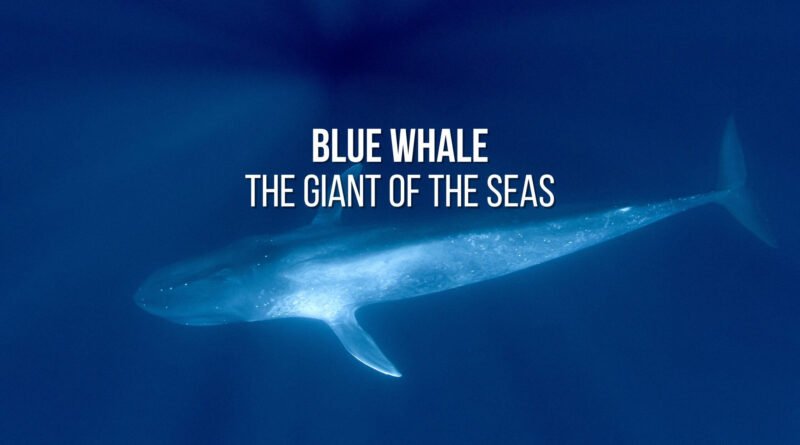Learn all about the blue whale: the giant of the seas
Imagine a baby that is born 26 feet long and weighs around 4 tons. Yes, a baby as heavy as a fully grown African elephant! Considering the size of the calf, we can get an idea of how extraordinarily large the mother must be, right? And she is! We are talking about the blue whale, the largest animal on planet Earth. In modern history, there is no other animal as large as it, and in this article, we’ve selected some curious facts and information about it that will leave you in awe. Ready for the read? So, enjoy and have fun!
Blue Whale (Balaenoptera musculus) and Its Subspecies
The blue whale, scientifically known as Balaenoptera musculus, belongs to the family Balaenopteridae, the order Cetartiodactyla, and the suborder Mysticeti among cetaceans. Within the realm of the blue whale, there are three subspecies:
- Balaenoptera musculus musculus: Also known as North Atlantic and North Pacific blue whale, this subspecies is the largest of the three. It inhabits the Northern Hemisphere and can be sighted in the Mediterranean Sea, Gulf of Mexico, and other regions of the North Atlantic.
- Balaenoptera musculus intermedia: Popularly known as the Antarctic blue whale, it derives its name from its habitat in the regions of Antarctica.
- Balaenoptera musculus brevicauda: Better known as the pygmy blue whale, it is the smallest among the three and resides in the Southwestern Pacific Ocean and the Indian Ocean.
In 1758, the renowned Swedish taxonomist and naturalist Carl Linnaeus published a work called “Systema Naturae,” in which he proposed a classification and nomenclature system for all known living organisms up to that point. It was in this work that, for the first time, the blue whale was properly categorized as it is known today, with the binomial name Balaenoptera musculus assigned to its species. However, as the years passed and new studies emerged, subspecies were identified, as mentioned earlier. Throughout this article, we will discuss generalities about the main species, Balaenoptera musculus.

Physical Features of the Blue Whales (Balaenoptera musculus)
The blue whale is undeniably striking in its dimensions, making it one of the most fascinating creatures on Earth. As the largest animal, it can reach a whopping length of 98 feet, equivalent to two conventional buses lined up or a 10-story building. Weighing between an astonishing 150 and 200 tons, it surpasses even the fierce T-Rex, which weighed ‘only’ 8 tons. Interestingly, some scholars believe that the blue whale wouldn’t be able to support its weight on land due to gravity.
Contrary to what one might imagine, this immense creature is not a fierce predator like orcas or great white sharks. In fact, the blue whale doesn’t even have teeth! Instead, it has hundreds of bristles, flexible filaments used to filter tiny krill while feeding. The upper jaw alone contains about 400 pairs of these bristles, measuring up to one foot in length and 21 inches in width.
Blue whales can be found in the Southern Hemisphere, particularly in the Antarctic region. Unfortunately, they are an endangered species due to various threats such as fishing gear entanglement, ship strikes, and commercial whaling. However, efforts are being made for blue whale recovery and conservation.
These magnificent marine mammals also have unique characteristics. For instance, their tongue alone can weigh as much as an elephant, and they are known to produce some of the loudest sounds in the animal kingdom. Blue whales have winter breeding grounds in the North Atlantic Ocean and typically travel in small groups.
Blue whales are not only the largest animals but also awe-inspiring creatures with remarkable adaptations. It is crucial to protect and preserve their habitats to ensure their survival for future generations.
In the image below, we get a very clear view of these “baleen plates.”

The skin of the blue whale is covered by blubber, a layer of fat that serves as thermal insulation and protects the animal from frigid waters. It has a smooth and slippery texture, with deep and long ventral grooves that allow the skin to expand.
Its life expectancy is 80 to 90 years, although an individual of the species has been recorded living up to 110 years. By the way, do you know how the age of a blue whale is calculated? Through layers of wax or fat in its ears. Interesting, isn’t it? Every six months, a new layer of fat settles on the bony structures of its inner ears, and it is by calculating the number of plates present that its age is determined.
Behavior of the Blue Whale
This magnificent giant of the seas doesn’t typically live in social groups and is usually spotted alone or in pairs. They are migratory animals with a diverse pattern, meaning some individuals in the species undertake long migrations, while others migrate to nearby locations. Some even stay in the same place year-round, as long as food is abundant. As marine mammals that breathe through their lungs, they are often seen at the surface where they obtain the necessary oxygen.

Distribution of Blue Whale Populations
The blue whale is one of nature’s most fascinating creatures. It is widely distributed worldwide and can be found in the Northern Hemisphere, Indian and Southwestern Pacific Oceans, and Antarctic regions. These magnificent marine mammals inhabit pelagic regions, which are areas of the ocean with significant depth but no contact with the ocean floor. Blue whales are the largest animals on Earth, and their tongues alone can weigh as much as an elephant.
Conservation Challenges and Efforts
Unfortunately, blue whales are an endangered species due to various factors. They have been targeted by commercial whaling in the past, and the International Whaling Commission has implemented measures to protect them. Blue whales are also affected by entanglement in fishing gear and the decrease in their primary food source, krill.
Despite these challenges, efforts for blue whale recovery are underway. Researchers are studying their migration patterns, summer feeding grounds, and the impact of climate change on their habitats. This knowledge is crucial for conservation strategies and ensuring the survival of these magnificent creatures.
Blue whales are known for their impressive size and unique characteristics. They have the largest heart of any living animal and are also one of the loudest animals in the world. They are often accompanied by killer whales in the North Pacific and are occasionally spotted in the Southern Ocean. The blue whale’s diet mainly consists of krill, and they consume tons of it each day to sustain their massive size.
The blue whale is a remarkable species that plays a vital role in the marine ecosystem. Protecting and preserving these gentle giants is essential for the health of our oceans and the overall balance of marine life.
Female Blue Whales and Their Reproduction
The blue whale reaches sexual maturity at the age of 10, and females produce only one calf per gestation, which lasts 11 to 12 months and occurs only every 2 or 3 years. Due to this, they are considered low-reproduction animals. The calves are born enormous, indeed, the size of an African elephant, as mentioned earlier: measuring from approximately 23 to 26 feet in length and weighing from 2.5 to 4 tons. Nursing lasts about 8 months, and this is the approximate period a calf stays with its mother. After this, it has learned to protect itself and feed independently, allowing it to navigate the oceans as the solitary animals they are.
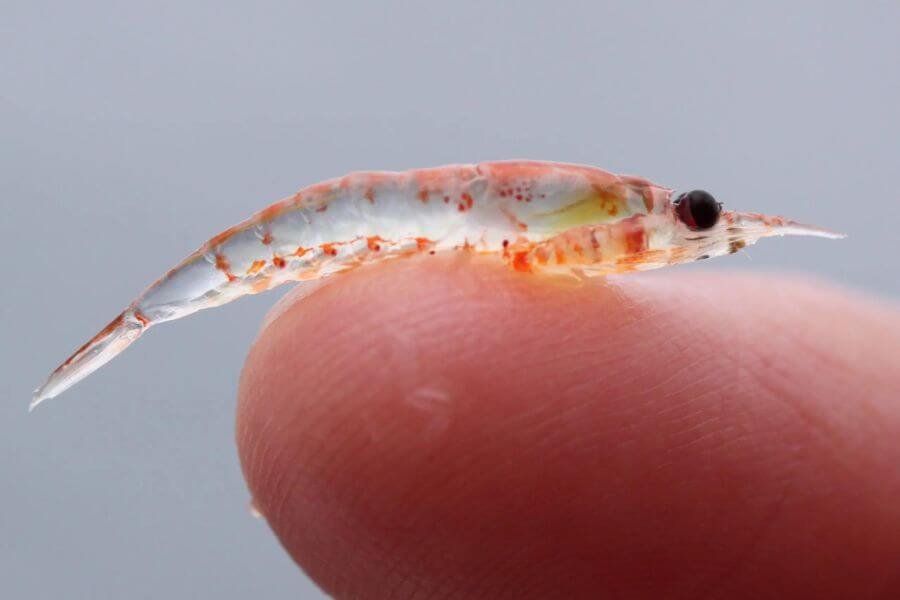
The Feeding Habits of Blue Whales
The primary food source of blue whales, the largest animals on Earth, is a tiny crustacean called krill. Blue whales, including the Southern Hemisphere, oldest blue whale, pygmy blue whales, Antarctic blue whales, and krill blue whales, are filter-feeding marine mammals. They feed by filtering enormous amounts of water and capturing their food between baleen plates instead of teeth. The water is expelled through these plates, trapping the krill, which is then swallowed.
The Vital Role of Krill in Sustaining Blue Whale Populations
Blue whales are found worldwide, including the eastern tropical Pacific, the west coast, the North Pacific, and polar waters. They are the largest animals and are known for their impressive size, with one blue whale weighing tons. Despite their size, these whales primarily feed on these tiny crustaceans. Krill is abundant in summer feeding areas, providing essential nutrition for blue whales and other large whales.
Blue whales have faced numerous threats throughout history, including commercial whaling. However, they are now protected worldwide, ensuring their conservation. These magnificent creatures are known for their unique characteristics, such as having the largest animal tongue, the loudest animal vocalizations, and the largest animal heart. Blue whales are an integral part of marine ecosystems and continue to captivate the world with their grandeur.
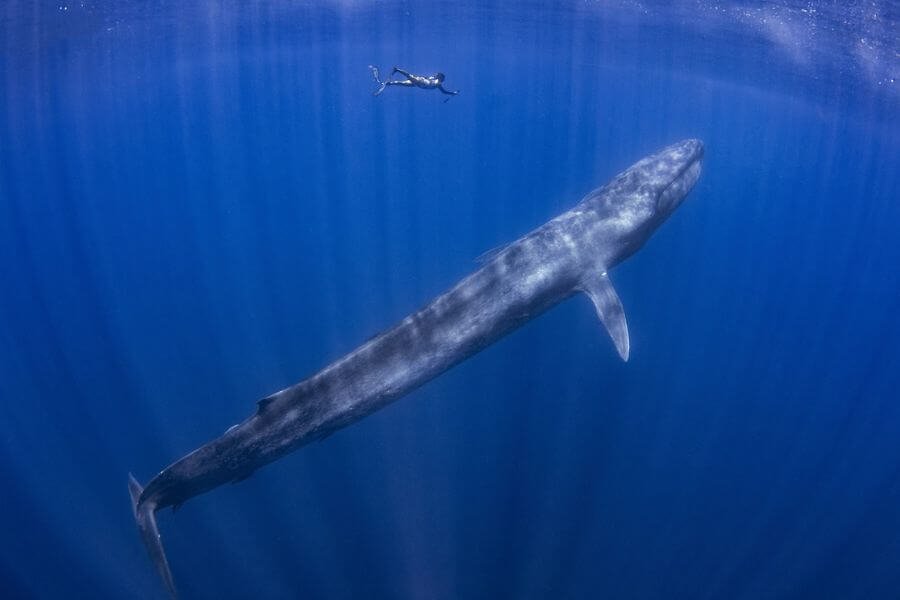
Conservation Status
The blue whale existed in great numbers until the early 20th century when, in the 1930s, a relentless pursuit of this animal began, resulting in the death of hundreds of thousands, according to experts. Why were they hunted? Due to the oil found abundantly in the fat of their immense bodies, a commodity with a highly lucrative market. This oil was widely used for the production of lubricants, soap, candles, and as fuel for lamps. The whaling industry targeted the blue whale due to the high demand for this raw material, not to mention the “advantage” that, after death, the blue whale floated in the water, making it easier to transport and remove by ships. The hunting of this whale was so massive that there were ships equipped with explosive harpoons and onboard factories to process and extract the oil while still at sea, discarding the remaining body of the animal into the ocean. This drastic and unbridled exploitation nearly decimated the global population of the blue whale.
Only in 1966 were legal measures taken to prohibit the hunting of this animal, and since then, it has been protected by international law. Unfortunately, these measures were not sufficient for the recovery of their population. As mentioned earlier in this article, the blue whale is considered an animal with low reproduction rates. Due to factors such as only one calf per gestation, a long gestation period, and a long time interval between gestations, the reproduction of blue whales is considered slow. It will take many more years for their population to recover.
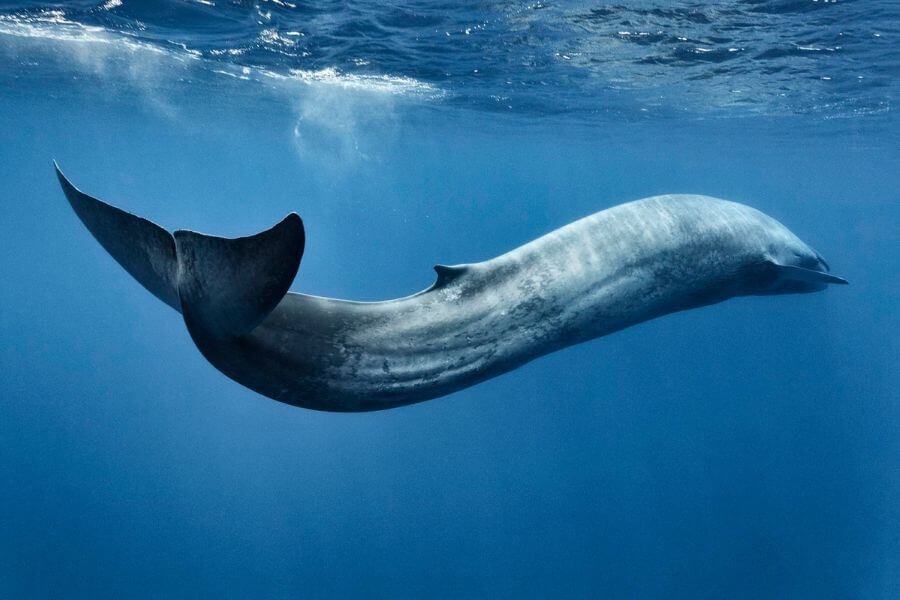
Today, the blue whale is classified as Endangered by the IUCN (International Union for Conservation of Nature), but it symbolizes the fight for wildlife conservation, with approximately 20,000 representatives of the species alive and scattered across the world’s oceans. This is a very low number compared to what existed before the rampant commercial fishing.
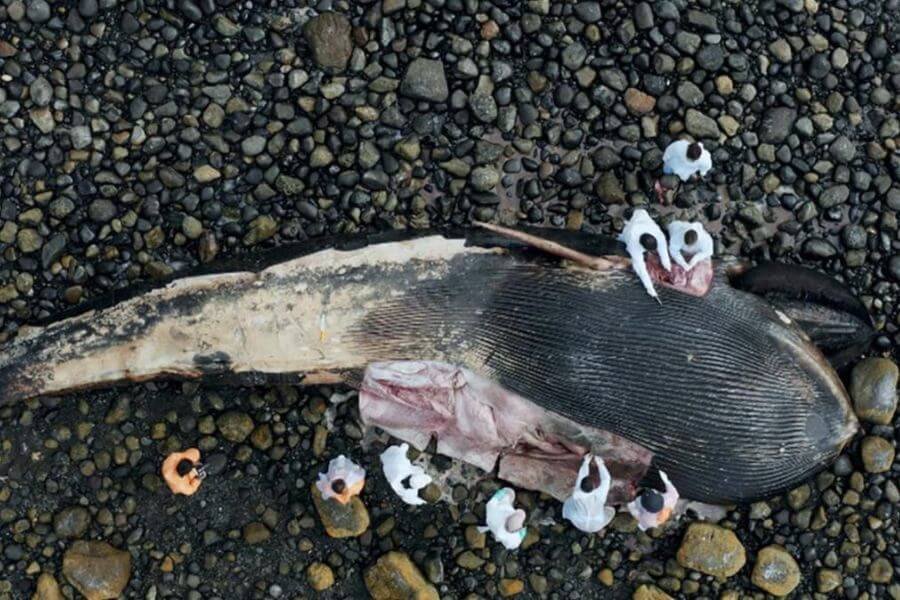
Causes of the danger of extinction of blue whales
The recovery of the blue whale faces other obstacles beyond illegal fishing today. Some of the dangers it faces include:
• Collision with large ships: When the blue whale surfaces to breathe, it can collide with the hull or propeller of cargo ships, cruises, and other large vessels.
• Fishing nets: It is common to find blue whales entangled in fishing nets that were not intended for them but were in their path.
• Habitat loss due to chemical and noise pollution
• Climate change reducing their food resources
• Overfishing of krill, their main food source, for the production of Omega-3 nutritional supplements.
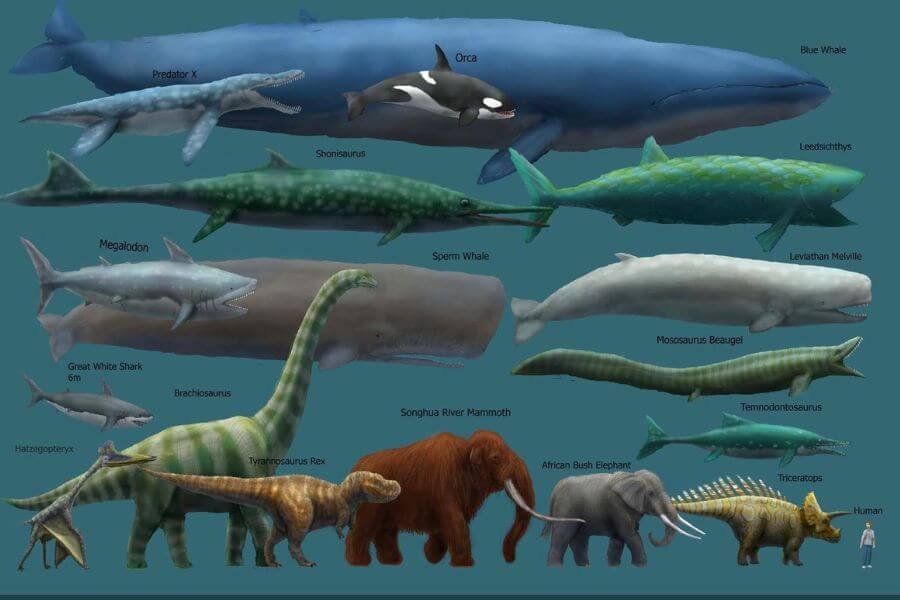
Fun Facts About the Blue Whale the Largest Animal in the World
• No dinosaur weighed as much as a blue whale. The Patagotitan mayorum is considered the largest dinosaur ever, yet even it weighed less than a blue whale. The Patagotitan dinosaur weighed a maximum of 77 tons, compared to the blue whale’s 200 tons.
• A human baby could crawl through the blue whale’s main blood vessel because of its immense size. Moreover, the whale’s heart weighs around 398 pounds and measures one and a half feet.
• An interesting fact about the blue whale and its diet is that, while it is immense, its food is no more than 2 inches each, the krill, which are small crustaceans. Because they are so small, they need to consume millions of them to complete their daily diet of 3.6 tons of food.
• Speaking of babies, a blue whale calf gains 198 pounds per day and consumes over 52 gallons of milk daily.
• Despite its name, the blue whale is not truly blue. Its coloration is actually grayish on the back and yellowish on the belly due to microorganisms that inhabit its skin. However, in the water, it does appear blue.
• The blue whale has spots on its skin that are unique to each individual, similar to our fingerprints, serving as identification.
• It has a 442-feet-long intestine.
• Two interesting records about the blue whale:
1 – It has the largest size difference between predator and prey: the whale at 98 feet and the krill at 1.96 inches.
2 – It produces the loudest sounds in the oceans: its “songs” reach 188 decibels and can be heard over a half mile away.
Conclusion
One positive aspect to highlight regarding the recovery of this magnificent and fascinating whale species is that, while there has not been significant progress in its population, there has also been no regression. Conservation and protection efforts need to be continuous, and new appropriate management measures need to be implemented. One such measure is the protection of krill, the basis of their food chain.
Knowing to preserve is our motto, and we hope you enjoyed learning a bit more about this giant of the seas.
Until next time! ♥

